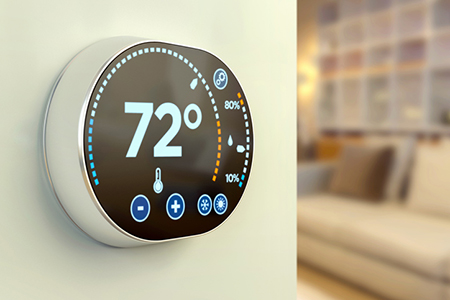If you’re driving home on a cold day and want your house to be warm and toasty when you arrive, there are a few ways to do so.
You can call and hope someone is home and ask them to turn the thermostat up. Or, if you have a “smart” thermostat, also called a learning thermostat, you can do it yourself remotely with your phone. A third way is with a learning thermostat that adjusts the temperature when you’re not home and turns the heat on before you get home.
Learning thermostats such as the Nest Learning Thermostat, Ecobee3 and Lyric learn how quickly your home heats up or cools down, know when you’re home, and use algorithms to create a schedule around your habits.
All of this can lead to lower utility bills, especially since heating and cooling make up most of a home’s power use.
One way is to set a schedule for heating and cooling your home. This is something a programmable thermostat can already do, but is an option homeowners may not be using.
Even with a programmable thermostat, most people set it to a temperature they’re comfortable with and forget about it. Or they turn the air conditioner on in the morning before a hot day begins, leaving it running all day and night without thinking about it.
A learning thermostat, however, has “auto away” sensors to tell if someone is home; it won’t turn up the heat or air conditioning when no one is home. It doesn’t depend on the GPS of your phone to determine if you’re away — though it can be used remotely from a phone — but the Nest has built-in wide-angle motion sensors to identify the time of day when people appear to be home.
After installation, whenever you turn the thermostat up or down, the learning thermostat learns your habits. If it turns down the thermostat and then senses you’re still home, it readjusts and its algorithm fixes the error.
You can also program a learning thermostat with your schedule so that in the winter, for example, it turns the temperature down when you leave for work at 8 a.m. and turns it up when you get off work at 5 p.m.
If you’re the type of person who remembers to turn their thermostat off before they leave for the day and turns it on when they get home, then you may not need a learning thermostat.
But if the furnace is running all day because you forgot to turn it off before going to work, then a learning thermostat can help you save money.
Even if you already have a programmable thermostat, you can probably save money with a “smart” one, especially if you don’t program your old thermostat. Nest found in a study that in homes where the Nest replaced a programmable thermostat, the savings were about twice as high as in homes where it replaced a non-programmable thermostat.
I hope you found this information helpful. Contact me for your real estate needs today!











